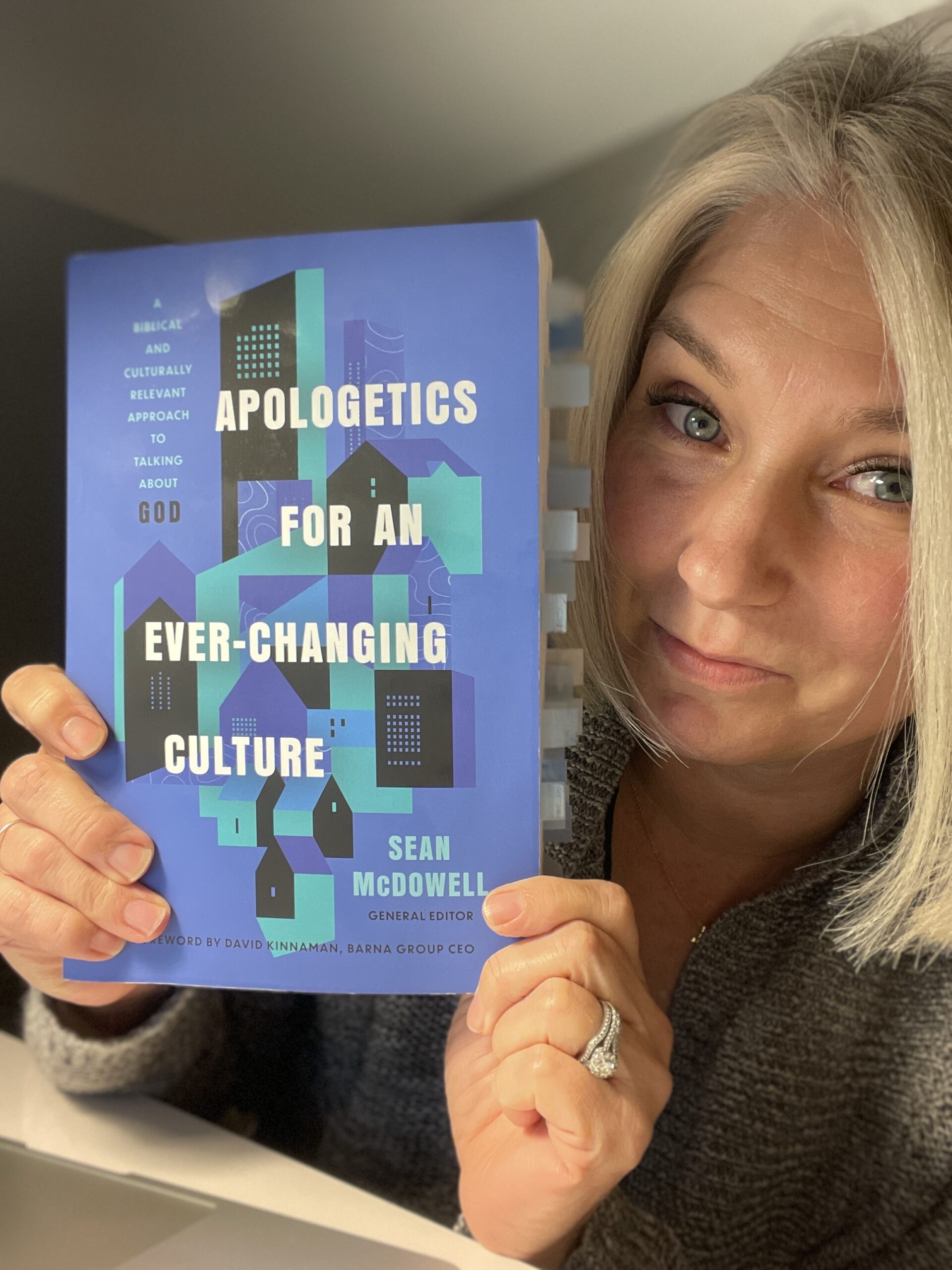TEACHING WOMEN TO GRACEFULLY DEFEND THE CHRISTIAN FAITH AND BIBLICAL WORLDVIEW.

How to Choose a Bible Translation
Choosing a Bible translation can be overwhelming. When it comes to choosing the best Bible translation for your study of God’s Word, there are a few things to keep in mind. First, choose a translation that accurately presents the Word of God. We never want to twist Scripture, either intentionally or unintentionally. Be careful you’re choosing translations that have been diligently worked on by councils of scholars — not individuals.
The Biblical Languages
The Bible was originally written in a combination of three different languages: biblical Hebrew, Aramaic, and Koine Greek. Most people today read the Bible in their native language, not the original ones. In order to choose a translation to study God’s Word, you’ll need to know a little about the types of translations available.
The Different Styles of Bible Translations to Choose From
Each type of translation results in a different style of text. When the Bible is translated from its original languages into another language, there are two primary types of Bible “translations”. dynamic equivalence and literal (or formal) equivalence. There is also a third hybrid type often called optimal equivalence.
Dynamic Equivalence
Dynamic equivalence (sometimes also called functional equivalence) means that the translation is primarily focused on providing an equivalent meaning of words or phrases from the original text. This type of translation is not word-for-word, but rather emphasizes the idea or intended meaning of the writer (who was writing by the inspiration of the Holy Spirit). This means that a dynamic equivalence translation is more like a paraphrase of the original text.
Examples of dynamic equivalence translations are:
- New Living Translation (NLT)
- Contemporary English Version (CEV)
- Good News Translation (GNT)
Literal/Formal Equivalence
Literal (or formal) equivalence translations take a more rigid, word-for-word approach to translating the original languages of the text.
When studying the Bible, my preferred translation style is a literal translation such as the English Standard Version (ESV) or the New King James Version (NKJV). I prefer this type off translation. Yes, it takes longer for me to study through (often using study tools like commentaries, Bible dictionaries, lexicons and other resources). But, I don’t have to worry that the translated text I’m reading has been paraphrased incorrectly.
Examples of literal equivalence translations are:
- English Standard Version (ESV)
- New King James Version (NKJV)
- King James (KJV)
- New American Standard (NASB)
A literal (or formal) translation does not have the same risk of paraphrasing God’s Word. It is not trying to fit the original text into a contemporary/modern tone. A dynamic equivalence text, while seemingly “easier to read” may lose some of the original meaning. This includes references to important cultural customs or well known sayings (like Jewish idioms) that were commonly used at the time the original text was written.
Optimal Equivalence
There is a third type of Bible translation that is a hybrid of the two primary types: optimal equivalence. This third hybrid style gives preference to a word-for-word literal translation. In situations where there is no equivalent word or phrase available a paraphrase or dynamic equivalence is used.
Examples of optimal translations are:
- New International Version (NIV)
- Christian Standard Bible (CSB)
- New English Translation (NET)
Paraphrases of the Bible
Another style you may come across are books like The Message by Eugene Peterson. The Message is not a translation and it’s not really even a paraphrase of the Bible. While many readers find that it makes the text more accessible to our modern style of speech, it does not accurately reflect God’s Word in the original text. Paraphrases should not be used as a primary Bible for reading and study.
This is also true of The Passion Translation. Although the title suggests it, it is NOT an accurate translation of God’s Word. I would recommend avoiding it. To learn more about why, check out this helpful video from Mike Winger at BibleThinker.org.
Why Individual Translations of the Bible are Red Flags
It is always advisable when choosing a Bible translation to choose a version that has been translated by a group of scholarly translators, as opposed to a single person. As humans, we’re prone to make mistakes. It’s just reality. But making a mistake in a Bible translation is a BIG deal. A council of people, working together to properly translate the original biblical text into a specific type of translation has the benefit of godly counsel. They work together and can act as correction points for one another. An individual, even with an editor doesn’t have that same benefit.
Use Multiple Translations
As you make a daily, disciplined, diligent study of God’s Word it’s a good idea to use multiple translations of the Bible. When you come across a verse or passage you are struggling with, try reading it in multiple translations. Reading the same verse translated in a variety of styles can help you to form a better understanding of the concept the Holy Spirit was conveying through the biblical writers. And that’s key.
When we study the Bible we should not be trying to interpret it for ourselves, seeking personal meaning. We should be seeking to find the intention of the original authors, editors, and compilers who were inspired by God’s Holy Spirit in their work. Proper biblical interpretation starts with realizing God is at the center of the story (not us). Ask yourself questions like: “what was God’s intention?” and “who was this written to?” Scripture was not written to or about us (the modern believer). It was written for us.
A good online tool for reading multiple translations is BibleHub.com. You can type in a Bible address (book, chapter and verse) or even search by word for a verse or passage. Then the results will provide you with multiple translations on a single screen.
Want to know more? Check out this helpful and quick article from GotQuestions.org: What is Dynamic Equivalence in Bible Translation? Or if you’d like to join Liz in an upcoming Bible study group or course, visit the Education page.
Leave a Reply
RECENT
Blog Posts

Have you ever wondered if the Bible is reliable? Can you trust that what’s written in Scripture is correct? You can! And not just because you believe the Bible is reliable, but because the Bible has proven itself to reliable again and again. In this episode of the unBibled podcast, host Liz Cobo shares the […]
READ THIS POST
filed in:

It can be overwhelming to start reading the Bible if you’ve never done it before. It’s a big book! But don’t let the size of it intimidate you. While a lot of people recommend starting with the gospels in the New Testament, particularly the Gospel of John, I prefer to start at the very beginning […]
READ THIS POST
filed in:

Have you ever wondered what Christian Apologetics is actually about? In this episode of the unBibled podcast, host Liz Cobo explains what the word apologetics means and why ALL Christians are called to always be ready to “give a defense” for the hope they have in Jesus. I’d love to hear from you if you […]
READ THIS POST
filed in:

If you’re going to choose only one book on apologetics this year – read this one! Apologetics for an Ever-Changing Culture is a must read for any Christian who wants to be ready to share and defend their faith and worldview in our rapidly evolving culture… and to do it as the Apostle Peter encouraged, […]
READ THIS POST
filed in:
"Beware of false prophets, who come to you in sheep's clothing but inwardly are ravenous wolves. You will recognize them by their fruits. Are grapes gathered from thornbushes, or figs from thistles? So, every healthy tree bears good fruit, but the diseased tree bears bad fruit. A healthy tree cannot bear bad fruit, nor can a diseased tree bear good fruit. Every tree that does not bear good fruit is cut down and thrown into the fire. Thus you will recognize them by their fruits."
Matthew 7:15-20 ESV
Develop your apologetics and Bible study skills
Join the Email List
OPT OUT AT ANY TIME